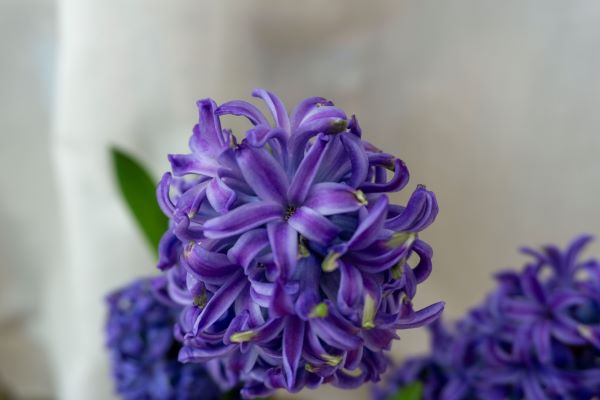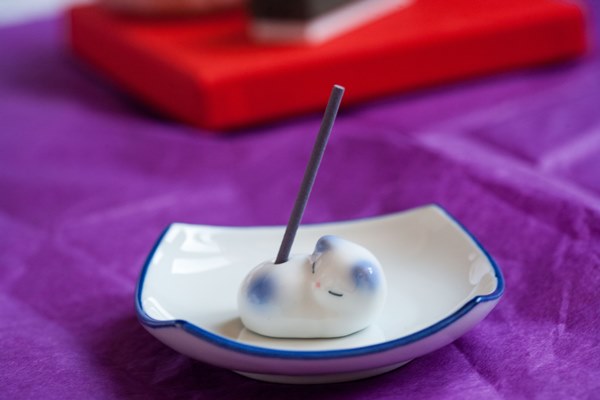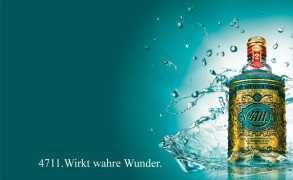I’m often asked for guidance to identify notes in specific perfumes. This question touches upon the larger topic of learning about fragrance–how is it made, what do various terms mean, how to parse out mixtures and so on. I’m asked about books or online materials that a non-professional can use to make sense of the intriguing and complex world of scents. Often, I direct my readers to the books by Philip Kraft and Harold McGee, but the truth is that there is no one definitive book that covers this topic. You would have to read widely and pick and choose your materials to tailor them to your interests.

What’s more, there is not one professionally recognized textbook on perfumery that all perfume students need to read. The text that comes close is Method of Creation and Perfumery by Jean Carles, originally published in 1961. I will leave a link at the end of the article, in case you want to read it. While it still remains a seminal text, much has changed in perfumery in the past decades, to the point that creation is conceptualized differently. With this in mind, where does this leave a perfume lover? What should you do in order to learn how to identify perfume notes and how to understanding fragrances better?
I used to advise smelling as much as possible. I still think that exposure is a great way to learn, but I no longer think that it’s the best way. In my work, I often mentor young perfume creators, and I find that the biggest hurdle for them is to keep their impressions organized. They are certainly familiar with many smells. They can identify notes. They know fragrances on the market, but they typically struggle to put it all together because they are not used to systematizing their observations.
My own training was based on the classical method develop by Jean Carles. I entered the IFF Perfumery Academy with a cohort of two other students, and the three of us used to spend our mornings smelling raw materials on our own and the afternoons doing exercises together. At each point, we were encouraged to keep detailed notes. Smelling a raw material without paying full attention to it was akin to wasting time. Yes, we would notice a smell, but unless we wrote it down and could explain it, the exercise was not treated as complete. At IFF, raw materials are studied by families, while the compare-and-contrast Jean Carles method was used for learning specific nuances.

In my practice today, I suggest the same approach, whether you are a professional or an interested connoisseur. Below is my 5-Step Method to Decode a Perfume.
1 Smell Raw Materials Individually
Learning perfumery by smelling complete fragrances is somewhat difficult, as these are well balanced mixtures designed to present a scent image. In fact, most modern fragrances are characterized by a particularly seamless impression, so picking individual notes out of them is difficult. You can enjoy them and try to guess what they contain, but if you want to approach your learning analytically, smelling raw materials in isolation is the only way to do it. Which is why perfumery schools devote several months just to smelling ingredients before they allow a student to make accords or perfumes.
You can smell essential oils diluted to 10% in alcohol or DPG (solvent). Or you can smell fruit and spices. Lemon, orange, grapefruit, mandarin, black pepper, coriander, cardamom, clove feature in my exercises, because they are accessible, retain smells well, have distinct odors and are used frequently in perfumery. Lemon was the first material I started learning in perfumery school and it’s still the one I give to my students.
Scratch the peel with a fork or zester and take a few short sniffs.
2 Smell Consciously
Think of the smell as it reaches your nostrils. Cast aside your idea of what a lemon smells like and smell the fruit you are holding in your hand. What do you observe? What does it remind you off? Is it sweet, bitter, sour, woody, green, herbal (add any other adjectives that make sense to you)? Focus on the smell and don’t let your mind wander. Put the lemon down and continue thinking of the smell and its associations.
3 Take Notes
Every time you smell, write down your observations. I cannot stress enough the importance of this step. Writing down your observations, however mundane they might seem to you in the beginning, makes your impressions more tangible and easier to recall. So don’t skip this step. You will find yourself remembering smells much better if you write them down.
4 Give Enough Time for Each Material or Perfume
Smelling taxes your brain the way few other activities do, so you will find yourself tired very soon. For this reason, I suggest starting your training with 1 or 2 ingredients and increase their number as you gain more experience. Keep a lemon on your desk and smell it every day for a week or even two. Every time you smell a material, a new facet will reveal itself to you. Essential oils or spices contain hundreds of different compounds, so it’s only normal that you will glean more from repeated exposure.
Even if you are smelling synthetic materials or isolates like linalool, limonene, hedione or Iso E Super, you will still learn more by smelling slowly and repeatedly. For a professional student, I recommend making dilutions of each material and compare them–10%, 5%, 1%.
5 Envision Smells
Once you’ve completed the steps above, begin to visualize scents in your mind. Your notes should help you. Imagine a scent of lemon, orange, black pepper. Take a look at your notes and add the nuances you’ve identified. Then smell the material and compare your impressions with your recollections. Once they match, you know that you’ve mastered a smell.
Keep a fragrance diary to track your progress, and whenever you smell a new perfume, notice if you can identify any components.

In Conclusion
You can do these exercises anytime, but it’s more important to be consistent. It’s far more beneficial to become familiar with the scents of lemon and orange by smelling them again and again and writing down your observations than to smell a dozen random perfume samples.
Above all, enjoy the process. Smelling is an excellent exercise for your brain, with numerous health benefits reported by various clinical trials. Tuning your senses makes the world around you more colorful and fascinating, and by paying attention to the often neglected sense of smell, you will sharpen your other sensory impressions.
If you are interested to smell together with me, join me for one of my perfume classes, online or in my Brussels studio. The May and June schedule is currently open. While some classes are already full, the following sessions are still available. I highly recommend starting with the Spices-Citrus-Dark Woods, as these sessions form the foundation of my training method.
Perfume Fundamentals: Spices
Location: Online, Zoom
Date: May 11th, Saturday 12:00pm-1:30pm EST/6:00pm-7:30pm CET
Price: €55 Book Now
Perfume Fundamentals: Citrus
Location: Online, Zoom
Date: May 15th, Wednesday 12:00pm-1:30pm EST/6:00pm-7:30pm CET
Price: €55 Book Now
Perfume Fundamentals: Dark Woods
Location: Online, Zoom
Date: May 18th, Saturday 12:00pm-1:30pm EST/6:00pm-7:30pm CET
Price: €55 Book Now
3-Class Package: Spices, Citrus, Woods
Price: €155 Book Now
Perfume Fundamentals: Rose
Location: Online, Zoom
Date: May 19th, Sunday12:00pm-1:30pm EST/6:00pm-7:30pm CET
Price: €55 Book Now
Perfume Fundamentals: Orange Blossom
Location: Online, Zoom
Date: May 25th, Saturday 12:00pm-1:30pm EST/6:00pm-7:30pm CET
Price: €55 Book Now
Perfume Fundamentals: Iris
Location: Online, Zoom
Date: May 26th, Sunday, 12:00pm-1:30pm EST/6:00pm-7:30pm CET
Price: €55 Book Now
3-Class Package: Rose, Orange Blossom, Iris
Price: €155 Book Now
Perfume Fundamentals: Lilac
Location: Online, Zoom
Date: June 5th, Wednesday 12:00pm-1:30pm EST/6:00pm-7:30pm CET
Price: €55 SOLD OUT
Perfume Fundamentals: Hyacinth
Location: Online, Zoom
Date: June 8th, Saturday 12:00pm-1:30pm EST/6:00pm-7:30pm CET
Price: €55 Book Now
Perfume Fundamentals: Tonka Bean
Location: Online, Zoom
Date: June 16th, Sunday 12:00pm-1:30pm EST/6:00pm-7:30pm CET
Price: €55 SOLD OUT
More information via the Online Perfume Classes page.
Extra Reading: Method of Creation and Perfumery by Jean Carles
Do you have your favorite techniques for learning about scents? I would love to hear about them in the comments. If you have any questions or need guidance with your training, please don’t hesitate to reach out to me.
















11 Comments
Tourmaline: Dear Victoria,
Thank you for these wonderfully detailed tips on learning to parse smells of all kinds, and for the book references.
Do you ever find that your extensive training, experience and ability to identify ingredients interferes with your ability to appreciate a fragrance as a whole, or does it enhance your enjoyment?
With kind regards,
Tourmaline May 6, 2024 at 9:47am
Victoria: Quite the opposite. It helps me understand better how a fragrance conveys its message and to become aware of more nuances. For this reason, I highly recommend this method to anyone interested in fragrance. You can start with the basic ingredients I’ve mentioned and I’m certain that it will bring much enjoyment.
And of course, I’m very happy to help and answer any question. Or share more recommendations! May 6, 2024 at 9:59am
Tourmaline: I thought that would be the case!
Earlier today, I was reading an article sent to me by Peter (who used to comment on these pages; after four years, we still email almost daily). It was about fragrances worn by celebrities, and I was reminded that Creed created “Fleurissimo” for Grace Kelly’s wedding. I wondered what you thought of the fragrance, so I searched and found a helpful post from November of 2011 – “Building Perfume Wardrobe Guide Part 1: Florals”. In it, a reader asked what you thought of Fleurissimo and you replied that you liked it (with more detail). In the text of your post, you mentioned Yves Saint Laurent Paris as one of the must-know classic rose fragrances, adding, “although it is more of a violet than a rose.” I think this is an example of how your ability to detect the notes and the relative quantities of each is useful for me. It helps explain why I like “Paris” so much, loving violet notes as I do. May 6, 2024 at 10:33am
Debby: A wonderful reminder of the importance of smell and the understanding of it. We live in such an overly scent saturated world now it’s easy to become fatigued. I’ve given up on new perfumes, I’d rather understand my old ones and appreciate them more.
This might also be useful for my husband, his sense of smell had only just recovered from surgery many years ago when Covid happened. He doesn’t have complete anosmia, but things kind of blink out if that makes sense. May 6, 2024 at 11:34am
Aline: Thank you very much for this post. I’ve been trying to teach myself to smell better and your blog has been the best discovery. I’m now keeping a scent diary and I’m happy to say that my sense of smell is much sharper. May 6, 2024 at 2:12pm
Julia: Thank you Victoria, I am going to go out and get a pretty notebook and get started right away. I had done exactly what you say not to do, which is go into my spice shelf and smell every gosh darn one in 5 minutes, lol :o) I guess I got a little too enthusiastic. Julia May 6, 2024 at 2:26pm
John Luna: This is a wonderful article — I look forward to putting some of these things into practice! What a great way to reinvigorate a love of perfume. May 6, 2024 at 3:28pm
Klaas: Victoria, a bit off topic, but I’m enjoying a short vacation on one of the Greek isles and osmanthus is in bloom everywhere!! The whole Isle smells of it, it’s just glorious! That such an unassuming little flower can emit such a powerfull perfume……incredible and what a treat! May 7, 2024 at 12:21am
Aurora: Have a wonderful time, it sounds idyllic. May 7, 2024 at 10:29am
Klaas: Thanks Aurora, we’re having a great time. It’s like walking in the Diptyque store over here! There’s fig trees everywhere, and osmanthus and jasmine and a shrub that smells of incense.
And flowers and citrus trees, even bergamote! So wonderful! May 9, 2024 at 9:41am
Aurora: Thank you so much for this Victoria. I still have my ingredients from last year’s classes and I do use them. I still recall my shock in noticing unsuspected nuances in black pepper for example.
I read Sentir le Sens by Mathilde Laurent, I found it helpful and easy reading, do you know it? She speaks fondly of her years at Guerlain, and contrary to what is sometimes reported not a hint of bitterness. The method by Jean Carles looks quite technical but I will look into it, thank you very much for including it in your article. May 7, 2024 at 10:57am